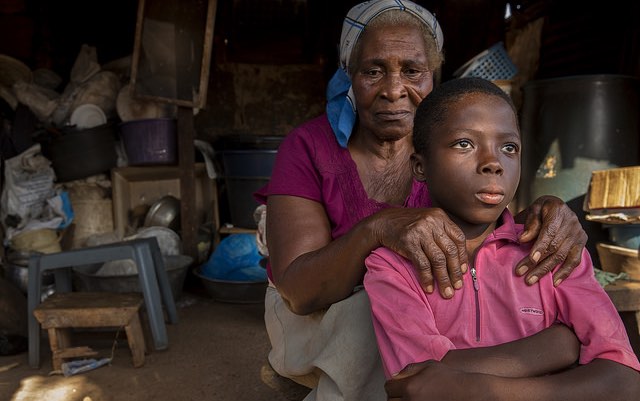Third of a series of blog posts on the release of the 2017-18 Annual Trends and Outlook Reports (ATORs) at the 2018 ReSAKSS Annual Conference in Addis Ababa Oct. 24-26. This year’s ATOR theme is social protection. Read the others here, here, and here.
Although the share of population living on less than $1.90 per day worldwide dropped from around 35 percent to 11 percent between 1990 and 2013, 767 million people still live in extreme poverty—more than half of them in Africa south of the Sahara. It would be practically impossible to reach the Sustainable Development Goal of eliminating poverty through growth alone. Rather, meeting SDG 1 by 2030 requires targeted interventions that can make sustainable improvements in the lives of the extreme poor. Identifying effective social protection programs that can reach them and make sustainable changes in their livelihoods is critical to this effort.
Programs to help increase incomes of the extreme poor
Three approaches are common in development programming because of their demonstrated potential to increase incomes of the extreme poor. Livelihood development programs consist of a wide range of interventions that help the poor acquire productive assets, build skills or create new market opportunities. Graduation programs take a holistic and integrated approach by simultaneously tackling the interrelated challenges faced by the very poor. (Graduation programs can be viewed as a subset of livelihood programs with a specific focus on targeting the extreme poor, providing a comprehensive support package in sequence to build a profitable micro-enterprise, ensuring a time bound graduation pathway out of extreme poverty.) Finally, by relaxing capital constraints, unconditional cash transfers have shown potential to help the poor invest in income-generating assets with substantial returns.
The ATOR study conducts a comparative analysis of the three approaches, taking income and consumption as the primary metrics of impact and focusing on long-term outcomes. During 2014-16, the study identified 48 livelihood, graduation, and cash transfer initiatives in developing countries with both impact evaluations and project-specific cost data.
Impact and cost-effectiveness
While one would expect a higher investment per household to have a generally larger impact, Figure 1a shows that there is no clear trend between per beneficiary cost and impact. However, looking at the impacts measured at least one year after the end of the intervention (Figure 1b), graduation cases become dominant in the high cost-high impact quadrant.
ReSAKSS (Source: Sulaiman 2016)
Graduation programs are the most consistent in making significant positive impacts across sites and in the longer-term while livelihood programs and cash transfers generally lack evidence of sustainability of impacts among the extreme poor.
Although the annual household consumption gain as a proportion of total program cost is the highest for cash transfers, followed by livelihood and graduation programs, the estimates for livelihood programs are lower if the analysis is limited to those targeting the extreme poor, or measuring impacts at least one year after the end of interventions. Growing evidence from direct comparison of graduation and lump sum cash transfers indicate greater cost-effectiveness of the graduation approach.
Lessons to take away
Based on current evidence, lump-sum cash transfers have perhaps the most potential to reduce poverty, but the graduation approach has the largest and most consistent body of evidence to support its impact on extreme poverty.
Fleur Wouterse is a Senior Research Fellow with IFPRI’s West and Central Africa Office in Dakar.







